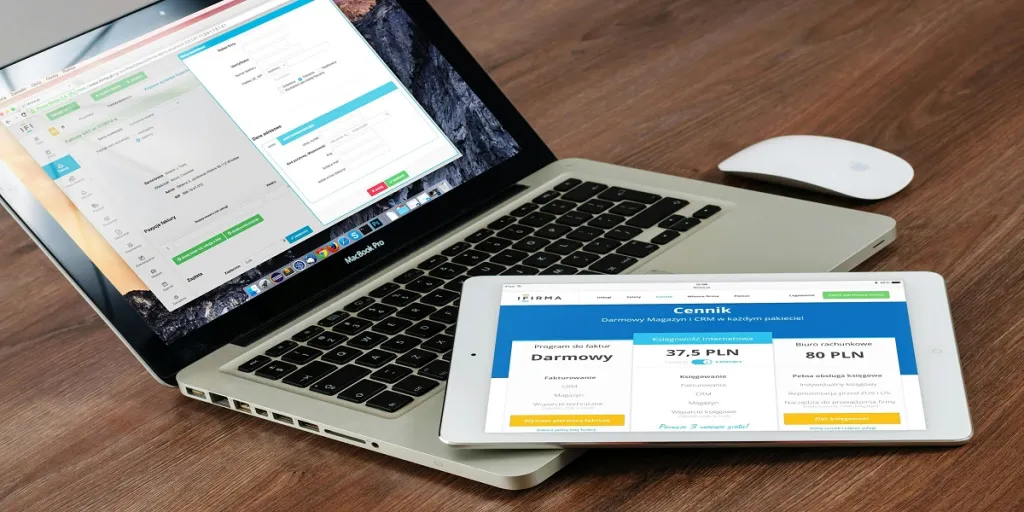Among the thousands of self-help books available on shelves, books related to the theme of “How to Get Rich” constantly rank at the top. Indeed, studies show that 88% of millionaires are self-made, and at least 60% built their wealth through business-oriented means. Most importantly, more than half of billionaire entrepreneurs got to where they are by reselling something first.
It’s clear from these examples that reselling has huge potential for entrepreneurs. In this article, we’ll demonstrate the value of the reseller business and how you can succeed in the industry, as well as the business models you can apply.
Table of Contents
1 .What is reselling
2. Reseller business models and examples
3. How to become a reseller
4. Resell, repeat, and reap rewards
What is reselling

A reseller is a person or company that obtains products from various upstream sources (suppliers like manufacturers, wholesalers, or other sellers) and subsequently resells the goods to end customers at a profit.
Similar to any other business, resellers make money from the difference between the product cost and the marked-up price. The main difference here is that reselling often offers greater leverage and flexibility in terms of the product offerings, whether in variety, availability, or timing. Resellers enjoy extensive freedom when selecting goods since their operations do not involve production or product development, which typically requires significant time, more effort, and higher investment.
As a result, resellers often have the flexibility to start the business as a part-time side hustle before scaling into a full-time venture. This makes reselling an ideal starting point for newcomers in business.
The two key factors that determine the profitability of a reselling business are sourcing and marketing. Those who understand the market well and are able to select the right products can yield strong profits. For example, some highly popular or exclusive collections, such as limited-edition goods, may easily fetch higher profits, particularly when promoted through the right, free, or low-cost online marketing channels.
Since reselling involves relatively low risk thanks to its minimal upfront investment, practically anyone can start a resale business. Upfront costs usually involve purchasing goods and related shipping fees, making overall cost and risk control highly manageable. However online resellers who possess a strong understanding of a specific audience or product niche often have a higher chance of success, as they are more adept in identifying the marketing potential of certain products and can therefore reach their target audience more effectively.
In addition, reselling extends beyond traditional retail – software, subscription-based services, real estate sales, and digital assets are also considered examples of resellable business models.
Reseller business models and examples
Dropshipping

Dropshipping is often regarded as a highly convenient reselling model. Not only does it allow a company to offer a broad selection of goods without the need to hold any physical stock, but it also eliminates the hassles of shipping orders to customers. In this setup, suppliers take on most logistics and fulfillment, freeing dropshippers to focus on marketing and customer service.
This third-party fulfillment business model is widely recognized as one of the lowest-risk, inventory-free, and easiest approaches to reselling with minimal investment. Its scalable nature and low-entry-barrier model also mean that dropshipping is naturally associated with higher profit potential, as overall costs remain low while selling opportunities are vast.
Wholesale reselling
Wholesale reselling, as the name implies, refers to purchasing bulk quantities directly from wholesalers or manufacturers. This reselling method can achieve high-profit margins through bulk discounts, providing greater pricing flexibility for resellers. However, it normally requires higher upfront capital and significant storage space. Yet despite these more demanding requirements compared to dropshipping, wholesale reselling is highly suitable for those seeking greater control over inventory and product quality.
Buying in bulk can provide resellers with more negotiating power, including customization options and branding opportunities. Meanwhile, since wholesalers often source products from multiple manufacturers, this diversity grants resellers a broader range of product choices, especially when compared to dropshipping suppliers, who tend to focus on specific niches or product lines.
Used or vintage retail & specialty

The fact that eBay, a platform renowned for secondhand and vintage goods, has thrived for over 30 years is perhaps one of the strongest pieces of evidence that used goods and vintage items have a distinct appeal that attracts buyers. On a global scale, the secondhand goods market was valued at $523.29 billion in 2024 and is projected to grow at an encouraging 13.6% compound annual growth rate (CAGR), reaching $1,451.32 billion by 2032.
Statistics for the global secondhand apparel market are equally promising, with an estimated value of $211 billion in 2023, expected to surpass $350 billion by 2027. In US thrift stores, clothing and books are the most popular items.
These statistics not only indicate that retro or one-of-a-kind used goods appeal to collectors, but that they also have higher profit potential, especially for experienced or specialized resellers who can identify high-demand items.
How to become a reseller
A practical way for someone interested in becoming a reseller is to test the market as a hobby or micro-seller first. This enables gradual decision-making and management of formal tasks like licensing and tax obligations as sales grow. With this in mind, let’s check out a structured and actionable sequence for launching a reseller business.
This approach emphasizes market research, demand validation, and confirming a reseller business model before proceeding with formal registration. However, it is important to note that, depending on the sellers’ research and business strategy, formalities such as business registration can be handled either at the outset or after confirming the venture’s scalability.
Assess market demand and identify a niche

Unless sellers already have a specific product in mind based on personal knowledge or experience, this step serves as a foundational prerequisite that every aspiring reseller should begin with. While assessing market demand, staying informed about shifting consumer preferences is crucial. Not every trend has a long shelf life, and what’s hot today may cool off sooner than expected. Keeping an eye on trends ensures timely capitalization on trending items without overstocking.
As for the types of products that are typically in high demand, trends on social media marketplaces and business analytics tools often provide reliable insight into popular items. For instance, both the Top Product section on TikTok Business and blogs of Shopify highlight the same top three product categories: fashion, consumer electronics, and health and beauty products. Since these industries are highly competitive, reseller hopefuls should narrow down a specific audience segment, e.g., focusing on sports enthusiasts or products with unique functions such as skincare items formulated for sun protection. In essence, identifying a well-defined niche enhances profitability.
Determine a business model and craft a basic plan

Once a niche is confirmed, the next step is to outline how to deliver the selected products to customers by prioritizing customer experience, fulfillment, and unique selling points. This includes establishing a pricing strategy, marketing approach, and overall business framework to meet customer needs.
One major consideration influencing business planning is choosing the right reselling model. Depending on the niche and target audience, any of the top three reseller business models mentioned above may be the best fit for your business.
Sourcing products and ensuring quality

While product sourcing strategy largely depends on the selected reselling business model, the good news is that major B2B wholesale platforms (such as Alibaba.com, Global Sources, and Joor) typically support all three common reseller models, saving resellers the hassle of going through multiple channels. For instance, Alibaba.com lists over 200 million products from 200,000 suppliers, covering a broad range of categories, including dropshipping, wholesale, used, or vintage goods, and even private label opportunities for future expansion.
At the end of the day, maintaining product quality is essential, regardless of platform or business model. Key quality assurance steps for resellers include:
- Securing at least one backup supplier per product type to mitigate risks related to stock shortages, price fluctuations, or supplier failures
- Checking supplier reviews and certifications to verify reliability, ethical practices, and compliance with industry standards
- Requesting product samples and conducting quality tests to confirm durability, materials, and overall consistency
- Assessing packaging and shipping standards to ensure that products arrive in good condition and minimize return rates
- Implementing a quality control process to identify defects early and maintain consistency in customer experience
Review formal business registration requirements

It goes without saying that addressing business registration and legal compliance is a critical component of establishing any business. Many guides and business resources actually suggest prioritizing registration before product sourcing and planning.
In real-world scenarios, however, many resellers may opt for a test run before deciding whether to scale up and formally register. Such an arrangement is indeed subject to local regulatory requirements, making it imperative for aspiring resellers to verify compliance with local tax laws and consumer protection rules. In many jurisdictions, individuals may sell casually as micro-sellers or hobbyists up to a certain revenue threshold before requiring business registration and additional permits.
Build an online presence and list products

Essentially, this is part of the overall marketing strategy, serving as a preparatory step before launching promotional campaigns and advertising efforts. Building presence focuses on two main elements: choosing the right online shop platform to sell on and ensuring an efficient/integrated fulfillment process.
The choice of where to list products for sale is highly dependent on product offerings and the selected fulfillment method. Certain platforms specialize in specific markets, while others prioritize in-house fulfillment services over self-fulfillment or dropshipping. For instance, Facebook Marketplace and eBay are often the preferred options of hobbyist resellers and those selling used goods. Etsy and Craigslist, on the other hand, are ideal for handmade, artistic, or locally sourced items. Meanwhile, TikTok Shop and all other major social media platforms are normally used by more established resellers for omnichannel marketing strategies.
Market and grow
The continuous marketing and brand-building process is arguably the most defining, ongoing, and long-term step when launching a reseller business. This is the time a business scales via advertising, brand-building, and deeper market research.
Continue refining the reselling approach, exploring and expanding new niches, or registering fully if the side hustle takes off. Build brand identity by leveraging different social channels, maintaining consistent visuals, and employing relevant ecommerce marketing tools to engage customers.
Ultimately, it’s the marketing approach and customer service that differentiate most ecommerce businesses – reseller businesses are no exception.
Resell, repeat, and reap rewards

Resellers source products from different suppliers and resell them at a marked-up price for profit. It’s one of the most flexible forms of business, attracting full-time entrepreneurs, part-time sellers, or even hobbyists. With its low startup costs and flexibility, the reseller business is easy to pursue for most enthusiasts willing to put in a little time, effort, and upfront costs.
Dropshipping, wholesale reselling, and the trade of used or vintage goods are the three most common reseller business models. To discover potentially profitable industries in your region, you should first analyze market demand, identify a niche, and determine the most suitable reseller business model. Then it’s time to design a business plan and source suitable products from various suppliers.
Once you’ve built an online presence, listed products, and implemented initial marketing to test early business results, it’s time to formally assess business registration requirements. Through continuous marketing, reselling, and making strategic improvements to refine your strategy, you stand to reap sustainable rewards.
For more wholesale business ideas, sourcing insights, and ecommerce trends, explore Alibaba.com Reads.




